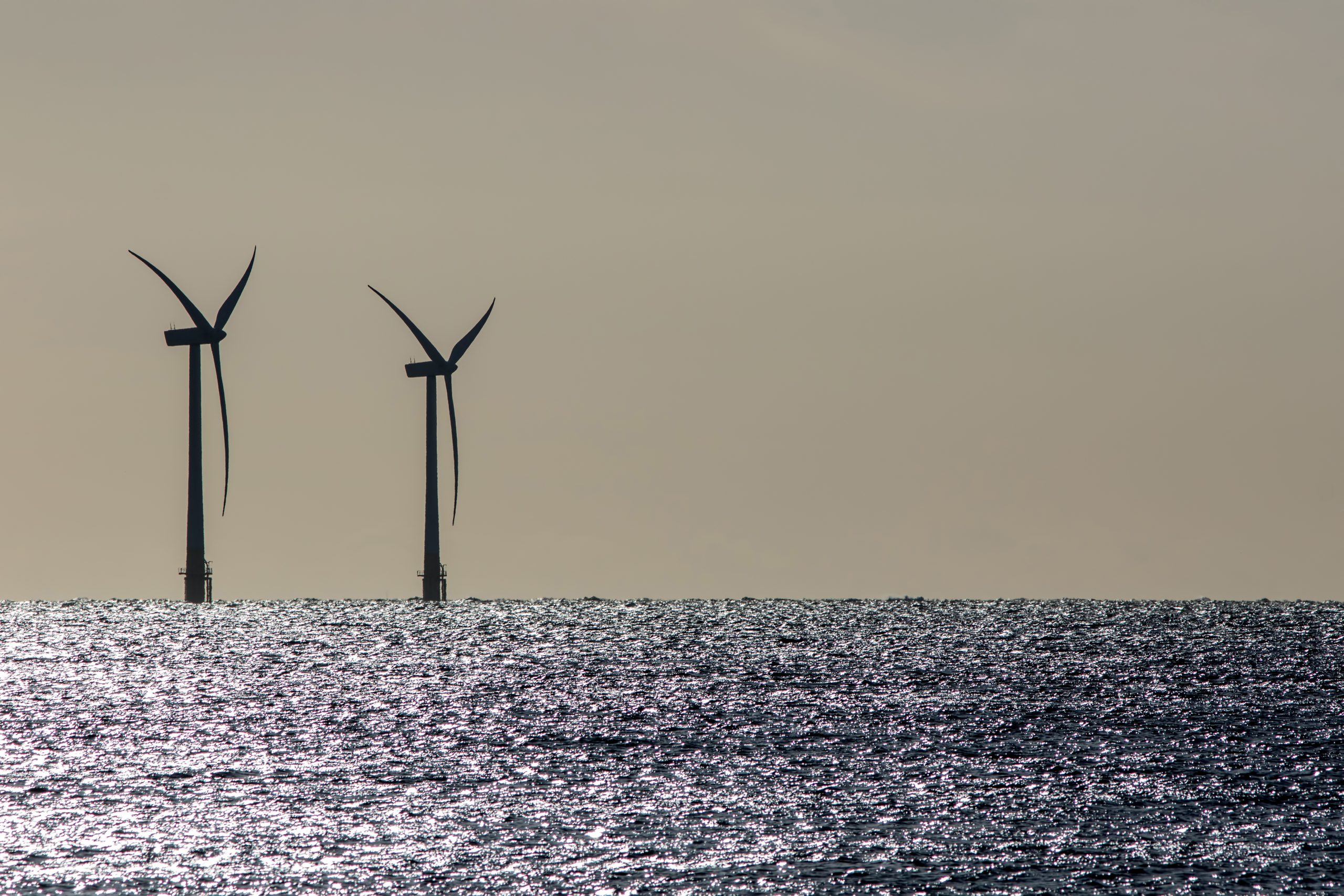Inflation Reduction Act vs. Green Deal: Transatlantic Divergences on the Energy Transition
Patrick Lenain | 20 March 2023
Monetary, Trade, Blog | Tags: Decarbonization, Energy, Industrial Policy, Protectionism, Tax Expenditures
This blog was first published in French by IFRI (Institut français de relations internationales)
The U.S. Inflation Reduction Act (IRA) has caused significant transatlantic tensions since its signing by Joe Biden in August 2022. The White House aims to break with the country’s high levels of fossil fuel consumption and switch to clean energy – a change that Europeans have long called for. To do so, it offers massive tax credits over ten years and introduces measures that go against World Trade Organization (WTO) rules. Europe sees this as a protectionist attempt to attract the booming green industry to its territory, at the expense of its trading partners. Visits to Washington by France’s President Emmanuel Macron and Minister of the Economy and Finance Bruno Le Maire, his German counterpart Robert Habeck, and European Commissioner Thierry Breton have so far not changed the situation.
To respond to the IRA, European Commission President Ursula von der Leyen announced a major “Green Deal Industrial Plan” in early February 2023 to boost the competitiveness of Europe’s cleantech industry. This new plan is built upon past climate initiatives, such as “Fit for 55”. Overall, the European strategy has little in common with the U.S. IRA: no massive tax credits but instead higher carbon taxes; no protectionism but instead a strong preference for free trade. The two strategies are radically different. Transatlantic misunderstandings and diplomatic tensions are therefore likely to persist.
Decarbonizing the U.S. energy mix
According to the Statistical Review of World Energy published by the British company BP, the United States emits almost twice as much carbon dioxide as the European Union. A main source of emissions is electricity production, which comes mainly from coal-fired (22% of the electricity mix) and natural gas-fired power plants (38%). Renewable energies account for a much smaller share (13%).
With the IRA, the United States is finally making significant decisions to decarbonize electricity by offering subsidies for renewable energy. Public aid of US$30 billion will be granted to wind farms and photovoltaic panels. Energy storage – essential for the stability of the power grid – will be supported, as well as green hydrogen. Subsidies are also planned to extend the lifespan of the 93 nuclear reactors operating in the United States and to innovate in new nuclear technologies. The IRA’s bet is that these subsidies will enable the complete decarbonization of U.S. electricity by 2035.
Electric vehicles
The second U.S. source of emissions is the transportation sector, particularly passenger cars. Despite Tesla’s success, electric vehicles remain confined to the high-end market in the United States, and only 4.6% of new cars are fully electric cars. China has had a strong start, with electric vehicles now accounting for 22% of registrations. The European Union also sees rapid growth in electric vehicles, with 12.1% of sales.
The IRA is accelerating this trend. A tax credit of up to $7,500 will be granted for the purchase of new electric vehicles. A large number of charging stations – essential to encourage car drivers to make this leap – will receive a tax credit when installed. This is in addition to subsidies included in the Infrastructure and Jobs Act of November 2021 to install charging stations every 80 km along freeways. The goal is for electric vehicles to represent half of new car registrations by 2030.
Buy American Act
But the ambition is not just related to climate. The goal is also to attract the cleantech industry to the United States with massive public aid. The United States is very far behind in developing a cleantech industry: the country accounts for only 10% of global electric vehicle production, and most batteries come from China.
Against this background, the IRA makes the tax credits for electric vehicles conditional on local content rules, with the required minimum varying by product. Only electric vehicles assembled in North America (Mexico, United States, Canada) are eligible for the tax credit, thus penalizing cars made in Europe and Asia. Vehicles subsidized by the IRA must also be equipped with batteries made from components extracted or transformed in the United States or in countries with which the United States has a free trade agreement, which includes South Korea but excludes Europe. In addition, a minimum local content of 55% will be required from July 2024 for electric charging stations receiving subsidies. Similar conditions are imposed for wind turbines and solar panels: their steel and aluminium must have been produced in the United States, and a minimum local content of 40% is required for other components to fully benefit from tax credits.
The signal sent to businesses is that they must produce on American soil with an American workforce. Already, many private projects are being set up in Texas, California, and the Midwest to take advantage of IRA funding – for some after abandoning investments in Europe.
Promoting “Made in USA” is not new. It dates back to the Buy American Act signed by Republican President Herbert Hoover in 1933, when the American economy was in recession. This law requires the federal government to buy goods produced in the country. Exceptions have been granted since the 1980s, but nothing has changed in practice: only 5% of goods and services purchased by the U.S. government come from abroad.
A new impetus to protectionism was given by Donald Trump starting in 2017, and Joe Biden has introduced further protectionist measures by requiring that public infrastructure be built exclusively with materials from the United States. The IRA follows this logic. The law goes beyond public procurement and prohibits key tax credits to benefit imports. However, using the tax code in this way is explicitly prohibited by the WTO. The European Commission could therefore file a complaint with this organization, though the chances of success are modest due to the current dysfunction of its dispute settlement mechanism.
Beyond the legal aspects, this is also a risky bet on the economic front. To succeed, the climate transition requires offering access to energy at an affordable price for everyone. Restricting imports risks slowing down competition, preventing economies of scale allowed by globalized production chains, and hindering price reductions. Globalization has already led to a spectacular drop in the selling price of photovoltaic panels. According to a study by researchers at the Massachusetts Institute of Technology (MIT), 40% of this decline comes from economies of scale enabled by globalization. Bringing industry back to the United States would certainly have the advantage of strengthening the country’s security in an unstable geopolitical environment, but American consumers – public and private – risk buying their products at higher prices.
A “European Green Deal”
Unlike the United States, the European Union is betting on carbon pricing to quickly reduce its emissions. The Fit for 55 plan of July 2021 provides for an increase in energy taxation, the extension of the Emission Trading System (ETS) to road transport, buildings, maritime transport and aviation, and a carbon border adjustment mechanism. In addition, the European Commission has recommended the ban of fossil fuel cars from 2035 and those of trucks from 2040. Recognizing the impact of price increases on the most vulnerable, the European plan includes a social fund.
In addition, European countries appear uncomfortable with a protectionist approach. France, which supports the purchase of electric vehicles regardless of their country of origin, is a case in point. The ecological bonus and conversion premium are granted regardless of whether the purchased car was manufactured in France, the United States or China. Thus, a Dacia Spring Essential imported from China costs less than 10,000 euros after deducting the ecological bonus – no wonder it is the best-selling electric car in France! The French Parliament debated in December last year whether to prohibit aid to vehicles produced outside of Europe, only to eventually abandon the idea.
This apparent preference for non-protectionist measures has led the European Union to be accused of naivety. China already accounts for very concentrated market shares in entire sectors of the green industry: 90% of essential components for photovoltaic panels and 80% of batteries for electric vehicles come from China. Despite this criticism, the new roadmap of the European Commission announced on February 1st, 2023 – the Green Deal Industrial Plan – confirms its attachment to the principles of free trade. The Commission reaffirms its intention to negotiate free trade agreements – notably with India – to respect WTO rules, maintain competitive markets and deepen the internal market.
Adopting the U.S. approach with a “European IRA” would involve liberalizing national state aid, which 11 countries including Denmark and the Netherlands oppose. Indeed, this could trigger a “state aid war” between member states, which would seriously damage the internal market. The Commission has already relaxed its state aid rules during the Covid-19 crisis and with the war in Ukraine. Going beyond these relaxations is unlikely. Instead, the European Commission intends to use assertive trade policy instruments such as the anti-subsidy instrument or the WTO agreement relating to public procurement.
The only similarity between the European approach and the IRA is the scale of the available funding: € 250 billion from REPowerEU, initially intended to move away from Russian fossil fuels, will be reallocated, as well as € 225 billion remaining in the Recovery and Resilience Plan adopted during the Covid-19 crisis. Germany has its Climate and Transformation Fund with € 180 billion. France can also rely on several financial instruments such as the Green Fund, the Climate Action Loan, the Decarbonization Fund, and the Heat Fund.
The bet made by Europe is that these funds, combined with the dynamism of competitive markets and an open economy, will benefit its cleantech industry. This bet is reasonable judging by the success of Denmark’s cleantech industry – the country is a world champion in offshore wind — or the strong growth of European electric vehicles – such as Volkswagen, Mercedes Benz, BMW, and Renault. The Financial Times also reported in early February that American vehicle manufacturers (such as Ford) and Chinese battery manufacturers intend to invest in Europe.
The policy frameworks preferred on both sides of the Atlantic are very different. Both the United States and Europe are betting that their strategies will pay off. However, it is rare in history for two diametrically opposed economic policies to both be successful.
Only time will tell who was right… or who will be the first to change their mind.




